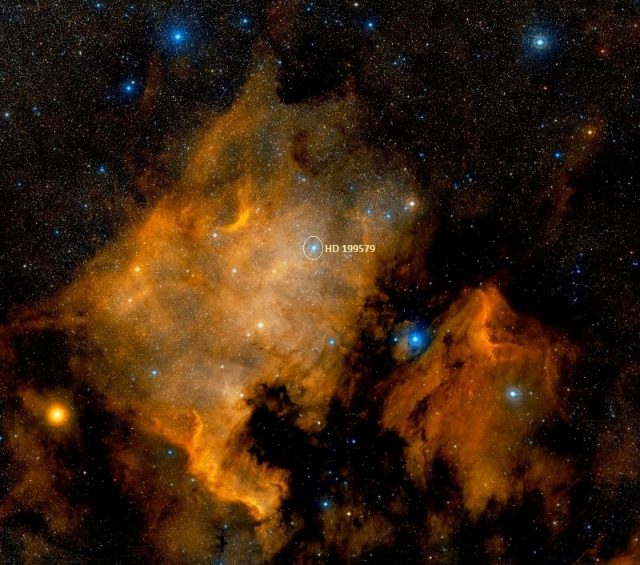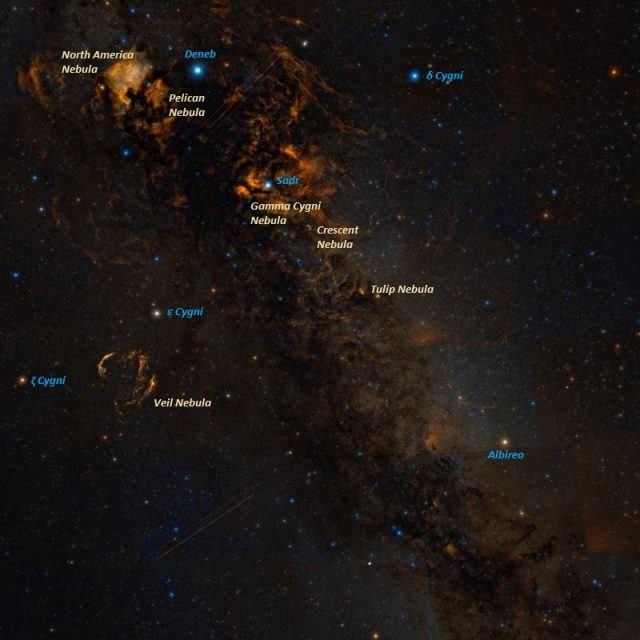The North America Nebula is a large emission nebula located in the vicinity of Deneb, the brightest star in Cygnus. The nebula is famous for its shape, which bears a striking resemblance to that of the North America continent. It occupies an area of 120 by 100 arc minutes and has a visual magnitude of 4. It lies at an approximate distance of 1,600 light years from Earth. It is listed as NGC 7000 in the New General Catalogue.
The North America Nebula is part of the same H II region as its smaller neighbour, the Pelican Nebula (IC 5070). The two nebulae are separated by a molecular cloud of dark obscuring dust. They are both located in the Orion Arm of the Milky Way.
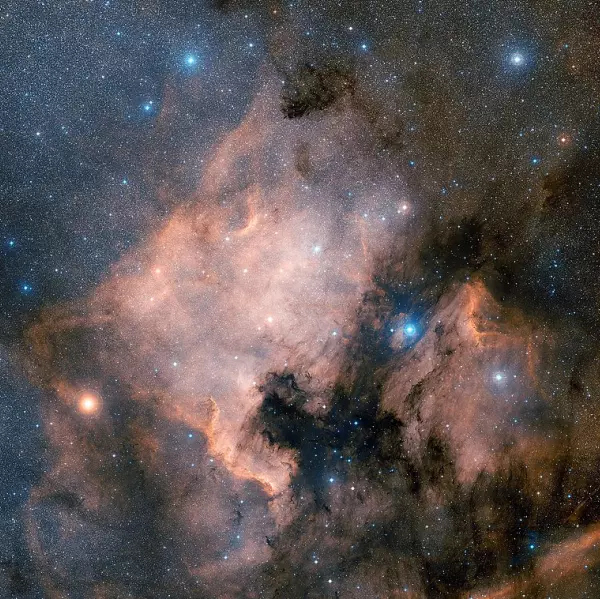
North America Nebula (NGC 7000), image: NASA
The identity of the star that ionizes the nebula’s hydrogen was long uncertain and suspected by some to be Deneb, as the North America Nebula lies only 3 degrees east of the bright star. However, it is the hot, massive 6th magnitude binary star HD 199579 that is responsible for setting the nebula aglow. The star is also known as Miro’s Diamond.
Despite having a large apparent size, more than four times that of the full Moon, and a visual magnitude that puts it in the visible range, the North America Nebula usually cannot be seen without binoculars because it has a low surface brightness. It requires exceptionally good observing conditions to be seen with the unaided eye. In clear, dark skies it appears as a portion of the Milky Way. In binoculars and small telescopes it appears as a fuzzy patch of light. The best way to observe it is with UHC or OIII filters. The nebula’s shape and distinctly reddish colour can only be seen in photographs.
The portion of the nebula that exhibits the most concentrated star formation is called the Cygnus Wall. It spans about 20 light years and appears as a W-shaped ridge in the part of the nebula that resembles Mexico and Central America.
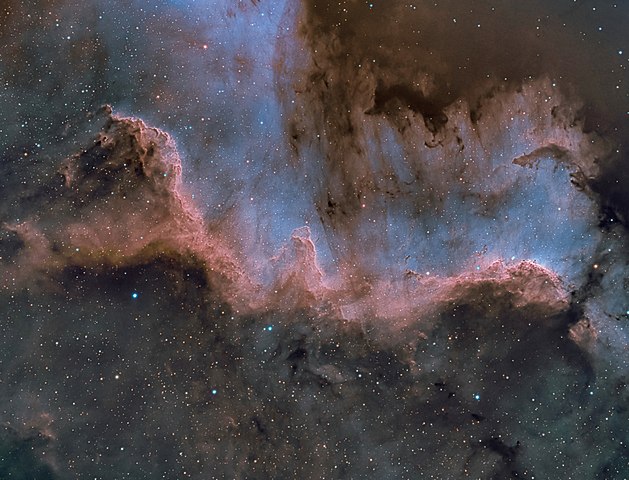
The Cygnus Wall, part of the North America Nebula (NGC 7000) was created using Ha, OIII, and SII filters using the Hubble Palette. Image: Wikimedia Commons/Chuck Ayoub
The dark nebula that lies in front the North America Nebula and blocks its light along the “East Coast” is known as LDN 935.
The open star clusters Collinder 428 and NGC 6997 appear embedded within the nebula, but are not really related to it. NGC 6997 can be seen in the direction of the “Great Lakes” area, but in fact lies hundreds of light years beyond the nebula. Collinder 428, visible at the eastern edge of the nebula, may not be a cluster at all, but just a window visible in the dark cloud.
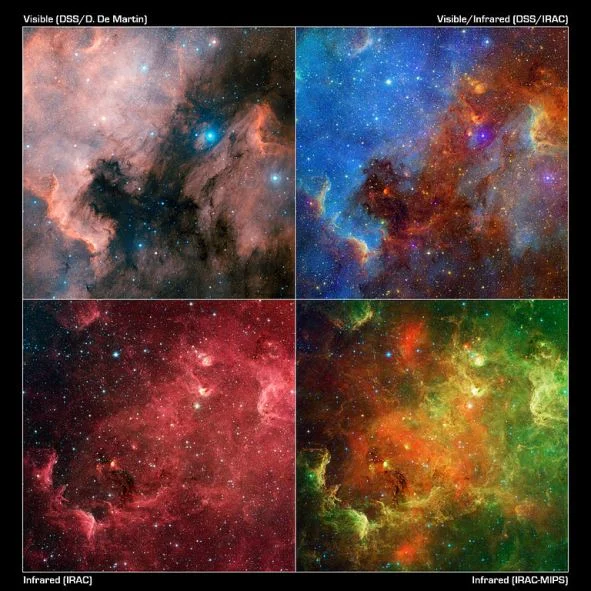
The North America Nebula and the Pelican Nebula — This layout of images reveals how the appearance of the North America nebula can change dramatically using different combinations of visible and infrared observations from the Digitized Sky Survey and NASA’s Spitzer Space Telescope, respectively. In this progression, the visible-light view (upper left) shows a striking similarity to the North America continent. Each is cropped to the easterly bulk (thus also the quasi-“Gulf of Mexico” region). The red region to the right is known as the “Pelican nebula,” after its resemblance in visible light to a pelican. The view at upper right includes both visible and infrared observations. The hot gas comprising the North America continent and the Pelican now takes on a vivid blue hue, while red colours display the infrared light. Inky black dust features start to glow in the infrared view. In the bottom two images, only infrared light from Spitzer is shown — data from the infrared array camera is on the left, and data from both the infrared array camera and the multi-band imaging photometer, which sees longer wavelengths, is on the right. These pictures look different in part because infrared light can penetrate dust whereas visible light cannot. Dusty, dark clouds in the visible image become transparent in Spitzer’s view. In addition, Spitzer’s infrared detectors pick up the glow of dusty cocoons enveloping baby stars. Image: NASA/JPL-Caltech/L. Rebull (SSC/Caltech)
The North America Nebula was discovered by William Herschel in October 1786. It was first photographed by Max Wolf in December 1890. The best time of year to observe it from northern latitudes is during the summer months. Other interesting objects in the area include the open cluster Messier 29, Veil Nebula, Sadr Region, Crescent Nebula (NGC 6888), Soap Bubble Nebula (PN G75.5+1.7) and Tulip Nebula (Sh2-101).
North America Nebula – NGC 7000
Constellation: Cygnus
Right ascension: 20h 59m 17.1s
Declination: +44° 31′ 44”
Apparent size: 120 x 100 arc minutes
Apparent magnitude: 4
Distance: 1,600 light years
Designations: North America Nebula, NGC 7000, Sharpless 117, Caldwell 20
